17 Influencer Marketing Effectiveness Statistics to Know for 2024
The numbers don’t lie when it comes to how well influencer marketing works in 2024. Below we share 17 eye-opening influencer effectiveness statistics...
Influencer marketing for beauty brands is bigger than ever. These 18 beauty influencer marketing examples highlight how investing in influencers is paying off.
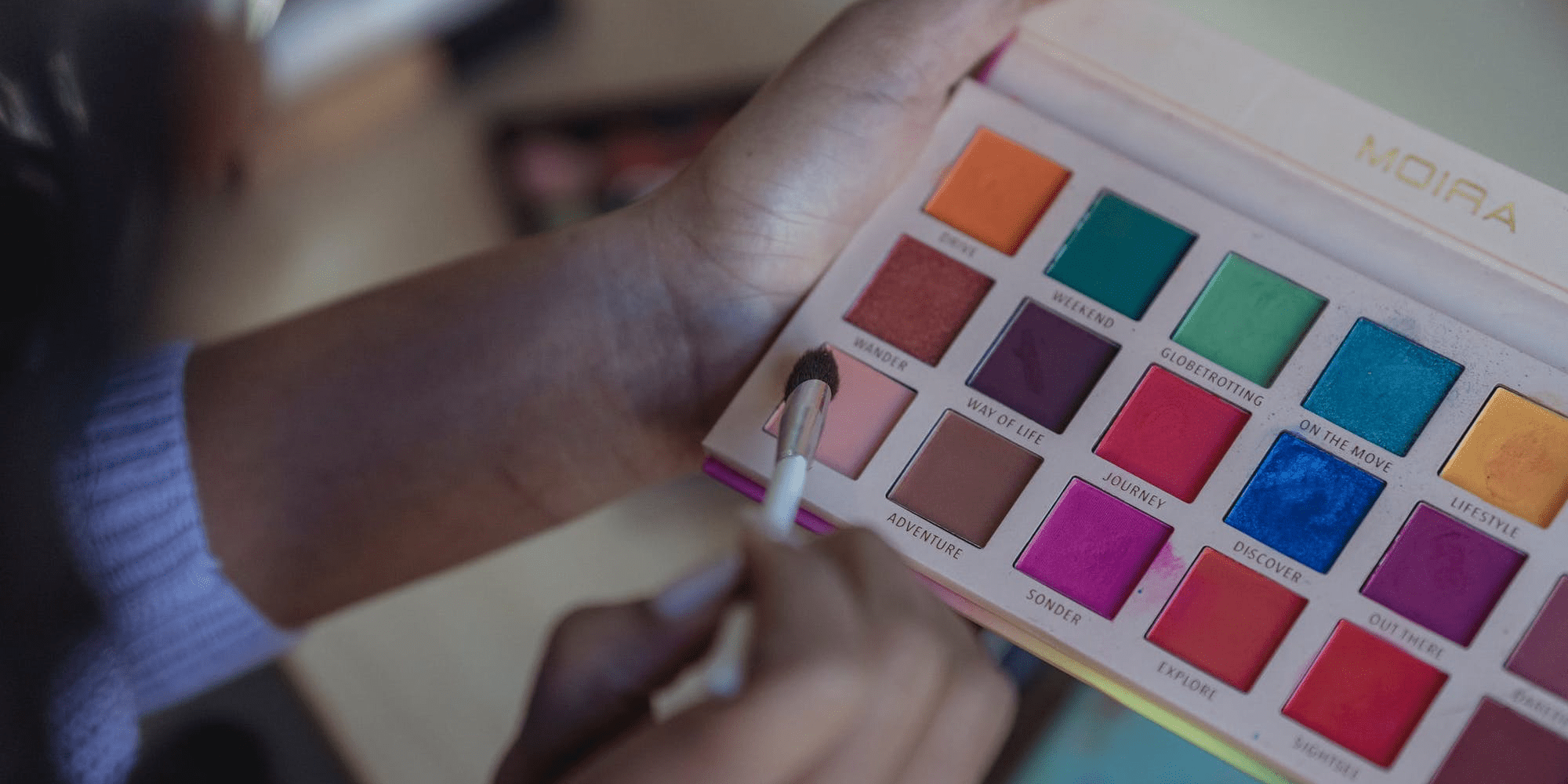
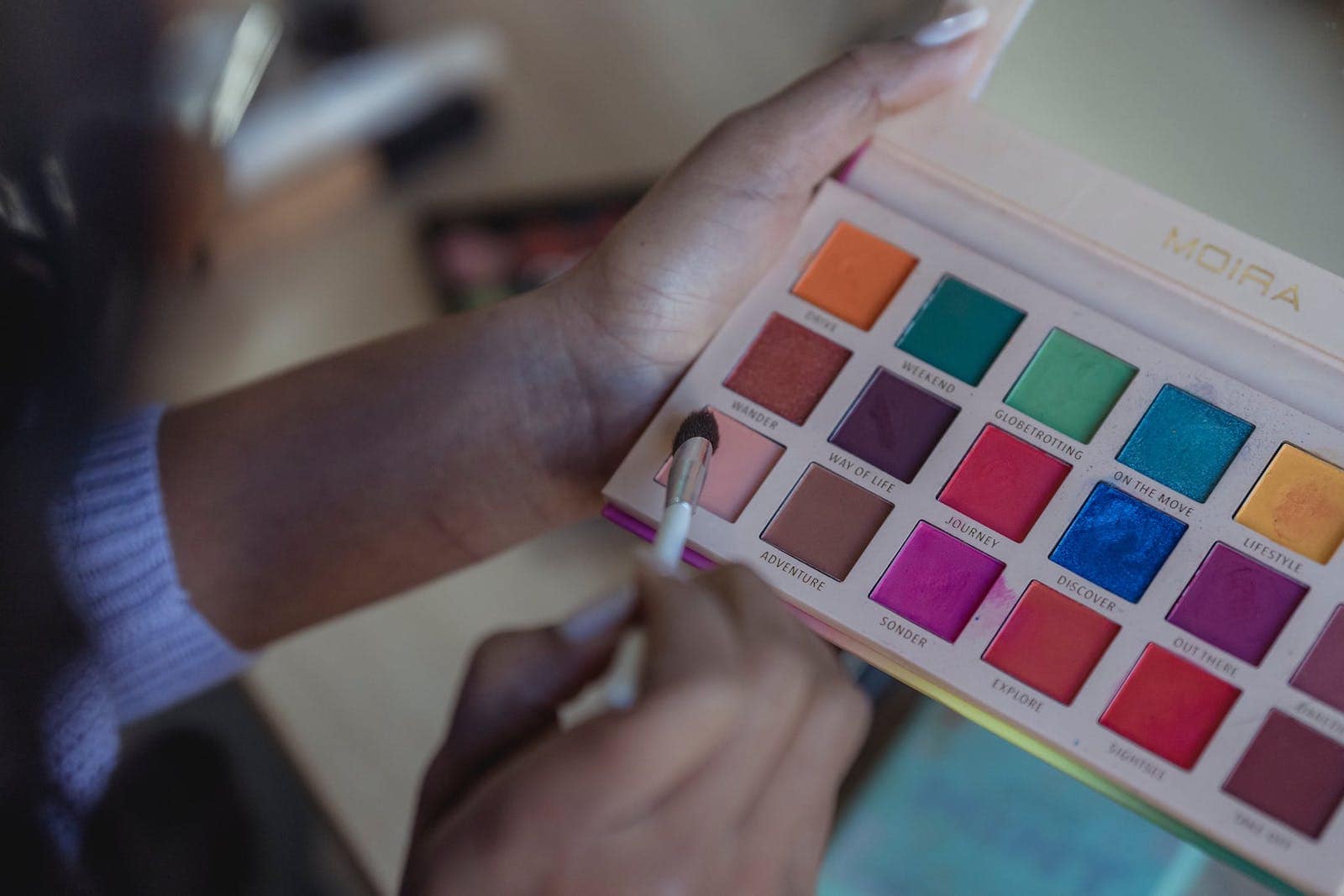
It's no surprise that influencer marketing for beauty brands is booming right now.
Heck, this has been true since the dawn of creator campaigns.
Fast forward to now: 74% of Gen Z (and 66% of millennials!) make purchases based on what they see beauty influencers post. Meanwhile, consumer spending on beauty products is surging.
The cosmetics industry alone is on track to grow by $20+ billion within the next four years.
The ongoing boom of beauty influencers on both TikTok and IG is integral to that growth. As consumers flock to social media to research brands, shoppers expect recs from influencers.
From social proof to social SEO, the stakes are high and competition is fierce. That's why beauty brands need an ongoing, high volume of influencer content. We put together this list of beauty brand influencer marketing examples to inspire you to scale up your own creator campaigns.
Glossier stands tall as a $1.8+ billion company and a household name in the beauty space.
However, the brand’s growth didn’t happen overnight (or by accident). Glossier was on the ground floor of Instagram influencer marketing and targeted social ads to scale way back in 2014.
But according to CEO Emily Weiss, it’s the “regular women” who promote their brand so devoutly that make Glossier so special and successful.
Working with influencers has also been at the core of Glossier’s brand and social strategy. Whether it’s Olivia Rodrigo or an independent makeup artist with 2,000 followers, Glossier is happy to shout customers out to their millions of social followers.
Between Glossier’s brand reps (ambassadors) and their robust referral program, the company isn’t shy about encouraging customers to share and promote their latest purchases.
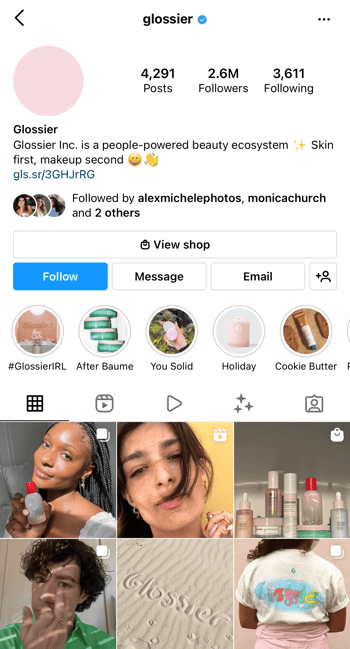
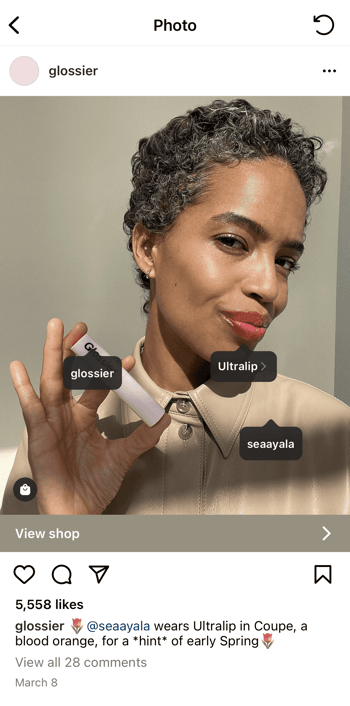
Source: Glossier
As the self-proclaimed “makeup for creators,” it’s no surprise that Morphe is one of the biggest beauty brands that work with makeup micro-influencers.
With over 3 million photos on the #MorphBabe Instagram hashtag alone, the company has a never-ending feed of user-generated content to promote and repurpose.
Morphe’s eye-popping creator content often feels like a mix between a product showcase and an art project. How-tos, hacks and quick-cut tutorials featuring creators are cornerstones of the brand’s social strategy.
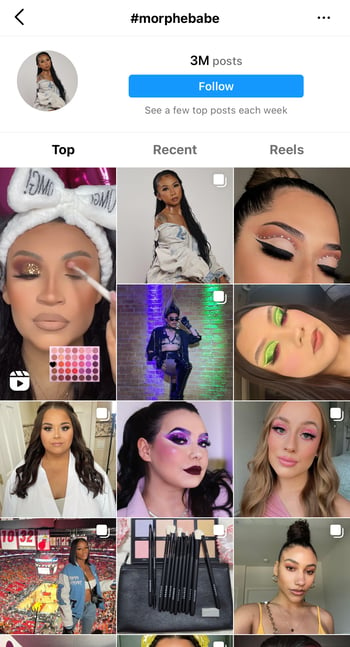
With over a billion interactions across their social channels, Morphe’s feed represents valuable real estate for micro-influencers looking to earn exposure. The platform’s 10+ million Instagram followers prove that a content strategy based primarily on your customers can pay off.
If you want to get more people talking about your brand, don’t neglect the power of “free.”
Fun fact: NYX managed to grow their social engagement by 97% through extensive product gifting and freebies. This campaign took place between 2016 and 2017 — fast forward to the present day and NYX represents one of the biggest makeup brands on social media.
And despite being a 20+ year-old brand, the company’s social presence feels anything but old-school.
In fact, the company recently saw massive creator engagement on TikTok from their #ButterGlossPop campaign. The giveaway contest resulted in a shocking 10 billion TikTok views and 2 million user-generated videos according to Glossy.
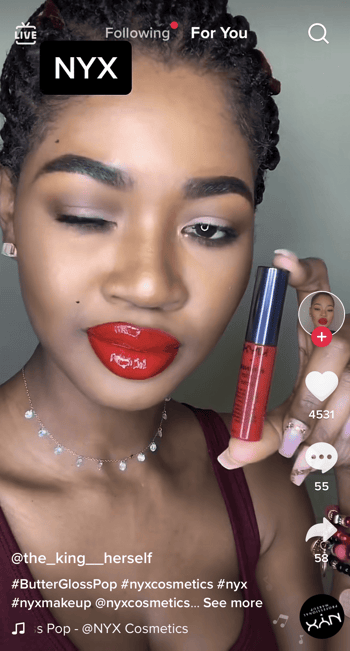
Source: @the_king_herself
NYX is yet another brand that doesn’t require a specific follower count to get featured on their feed, either. 800,000? 3,000? No problem!
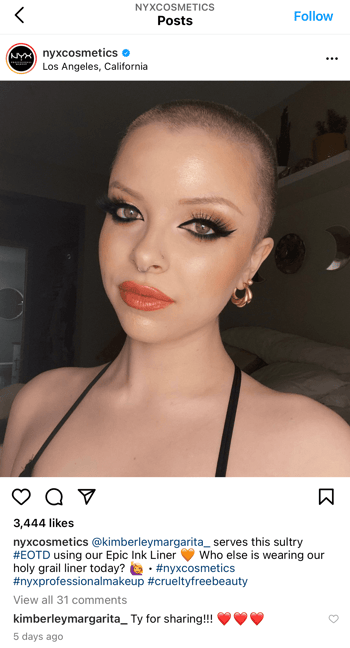
ColourPop has historically relied on social media to advertise its affordable products.
Needless to say, doing so has paid off! Beyond Instagram, frequent collaborations with YouTube influencers have introduced the brand to new waves of followers and fans.
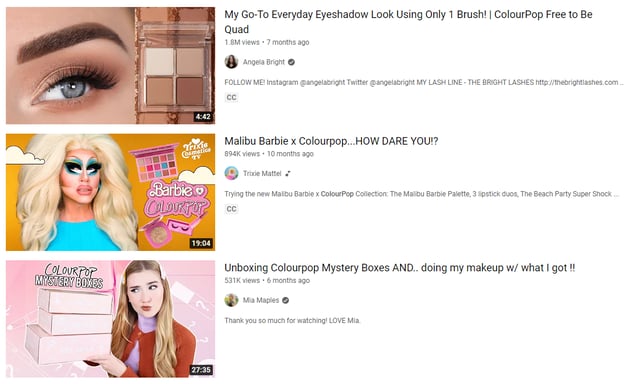
By incorporating ColourPop’s cosmetics into their makeup tutorials, these influencers helped the brand on two fronts:
You’ll notice that customers of all shapes and sizes grace ColourPop’s social media. Like most beauty brands that work with micro-influencers, ColourPop relies heavily on repurposing user-generated content across their social platforms.
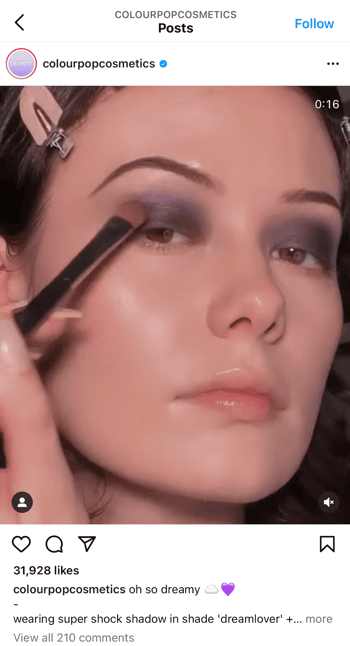
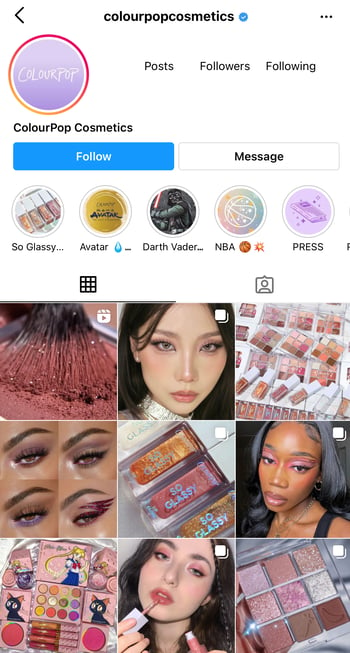
Giving your brand a sense of authenticity is one of the biggest upsides of influencer marketing.
And if you’re eager to reach a young and socially-conscious audience, you should emphasize authenticity throughout your beauty branding.
With a focus on natural and cruelty-free beauty products, Origins continues to partner with influencers that help them convey their company mission. Branded hashtags including #DiscoverOrigins, #GreenThePlanet and #EarthMonth provide a place for influencers to shout out Origin’s eco-focused cosmetics.
In the past, Origins has gone above and beyond for their beauty influencer campaigns (including committing to planting a tree for each entry into their #MyPerfectWorld launch). This is a perfect example of how beauty brands work with micro-influencers in a way that speaks to their audience’s core values.
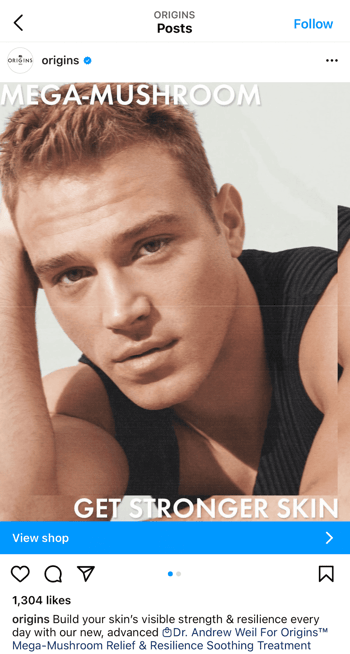
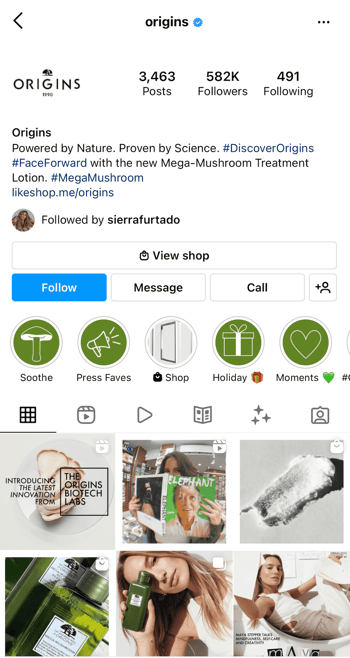
Influencers are a proven way to build buzz for your current products.
But the same also rings true for products you haven’t even launched yet.
Now known for their signature coffee scrub, Frank Body leveraged influencers as part of their launch strategy back in 2017 (hint: before the product was even live on their website).
The brand sent freebies and samples to beauty micro-influencers with a simple request: if you like the product, share it on your Instagram. The end result of the campaign was 2.2 million products sold (and $20 million earned) within months of the launch.
Not bad, right?
The brand still features creators on Instagram and TikTok (with the aforementioned scrub as a popular way to get people talking). Meanwhile, the popularity of Frank Body’s initial coffee scrub campaign drives home the value of influencers for product launches.
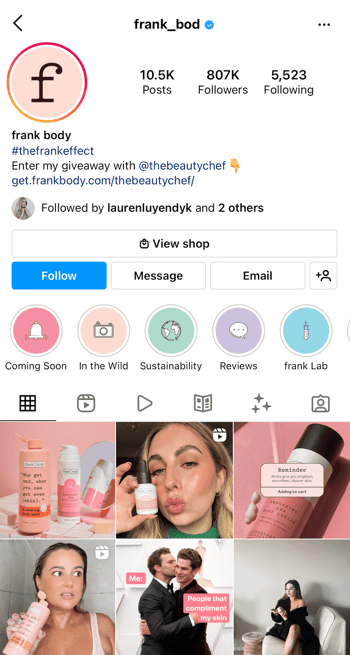
Earning coverage from the likes of Glamour and Vogue, Refy is an influencer-focused brand that was actually founded by social media star Jess Hunt.
Refy notably scored a lot of love on TikTok in 2022 after getting shouted out in a GRWM video by Bella Hadid that won over 700,000 “likes.” The brand’s message to embrace their true selves with products that enhance natural beauty has really resonated with customers.
You don’t have to look hard to find Refy customers raving about products across Instagram and TikTok, either. The brand regularly promotes tutorials and how-to videos across both channels.
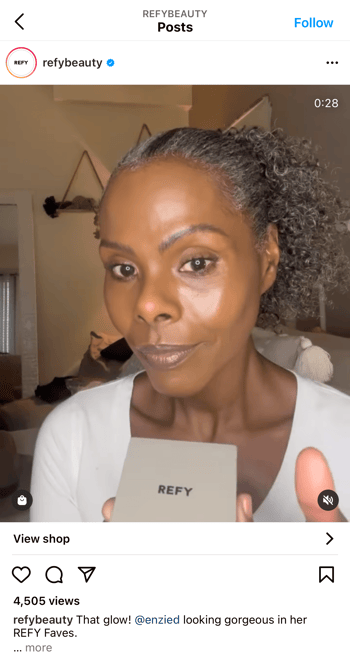
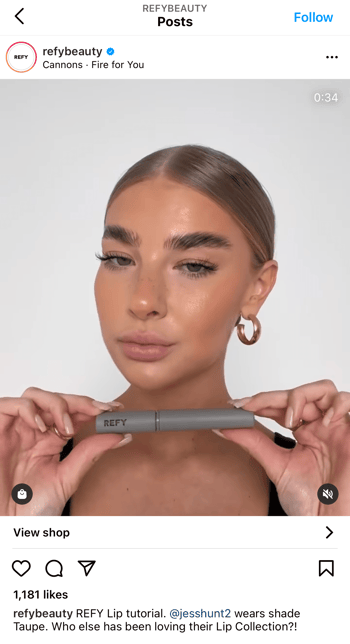
We’re seeing more and more legacy brands work with creators and we’re totally here for it.
And YSL recently took a unique approach to influencer marketing for beauty brands by branching out into an unconventional niche — podcasters.
For example, the brand partnered with YouTuber and Working Title podcast host Margot Lee as part of a recent promotion. Lee shouted out the brand across her podcast, YouTube channel and socials. Below is a snapshot of her recent Reel showcasing her Nu Bare Look Tint and Lash Clash Mascara.
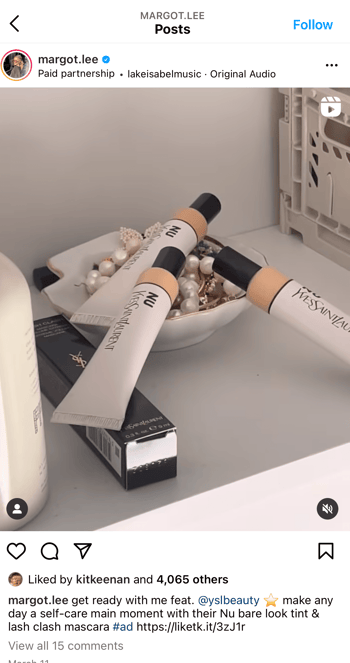
Brands with the name recognition of YSL certainly don’t have to do work with smaller creators but doing so is key to keeping relevant with the rise of social shopping.
Founded on community and self-expression, MILK Makeup regularly features UGC from micro-influencers that showcase the creativity of their customers.
But MILK goes a step further by actively listening to their audience and likewise personalizing their customer shout-outs.
For example, the brand makes a point to use their creators’ pronouns when tagging them in a piece of content.

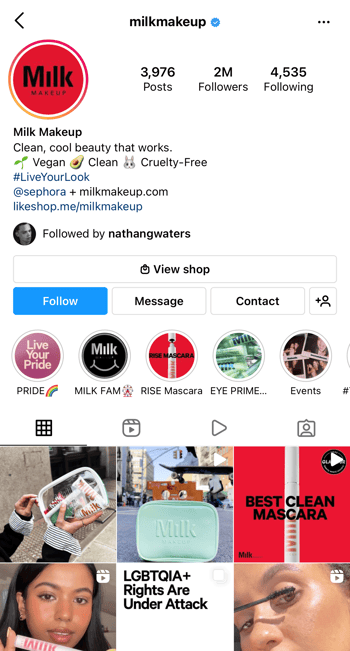
While this might seem like a small gesture on the surface, it highlights the personal relationship and respect that MILK has for their audience. This respect results in loyalty and trust.
Likewise, this harkens back to the brand’s #BlurTheLines campaign which sought to showcase how MILK’s beauty products were fair game for customers regardless of gender.
Despite name recognition (c’mon, it’s Chanel) and being over a century-old brand, experimenting with up-and-coming strategies is a must-do. This is especially true in such a competitive beauty space.
Like many legacy beauty brands, Chanel incorporates influencers into their marketing strategy alongside their more “polished” campaigns.
For example, influencer Jessica Clements has partnered with Chanel for years through her YouTube channel and Instagram. Working with the brand long-term, Clements and Chanel’s ongoing partnership highlights how building relationships with influencers can pay off over time.
Clements isn’t shy about how much she loves her Coco products. Still, there’s no denying that anything Chanel comes with a hefty price tag that many of Clements’ followers may not normally consider without her recommendation. This highlights how beauty brands that work with influencers can tap into totally new audiences.
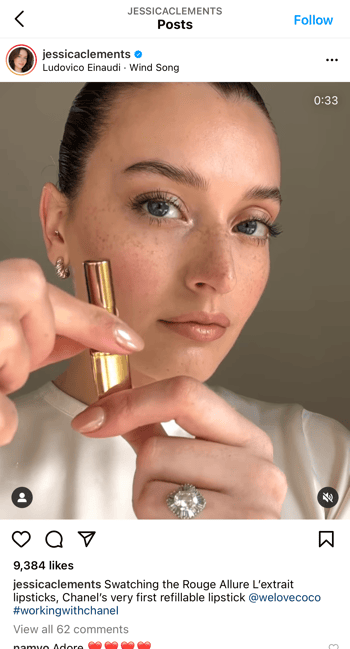
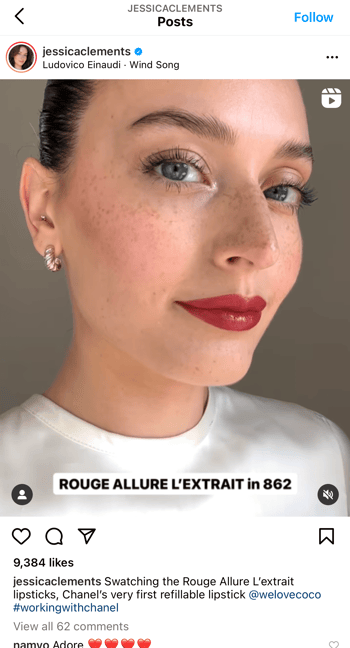
We can’t talk about beauty brands without talking about Kylie Jenner’s cosmetics empire.
Given that being an influencer is practically in her DNA, it’s no surprise that Kylie herself is front-and-center throughout the company’s branding and ads. It’s her brand, to be fair!
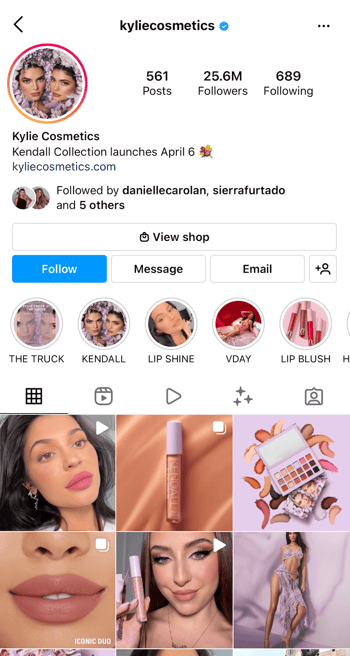
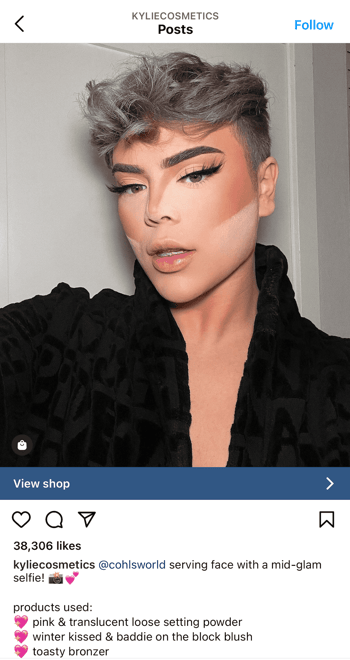
While we can debate why Kylie Cosmetics is so successful, the brand itself is a case study of how influencers can essentially build a company up from scratch. Besides, the brand isn’t solely about Kylie or massive creators (peek at this recent post as evidence).
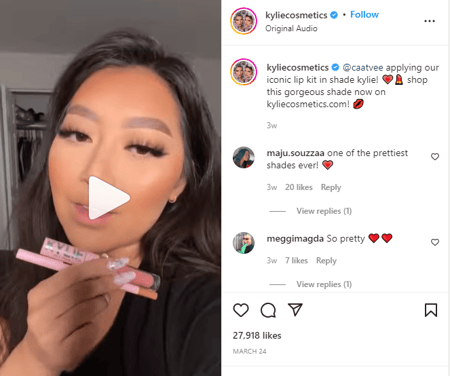
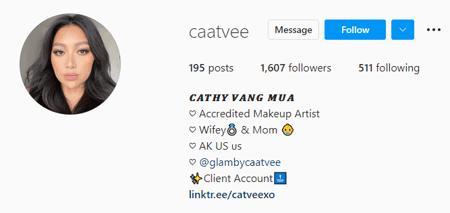
IL Makiage relies on creators to showcase their products in action, most notably their bite-sized tutorials. From an “instant facelift” to “five-minute eyes,” the brand does a brilliant job of highlighting real results in just a matter of seconds.
Known for their skin tone-matching, flawless foundation (“Woke Up Like This), IL Makiage found their groove on TikTok by partnering with influencers with all types of skin tones. Taking a “show, don’t tell” approach, they enabled creators to prove the power of their products.
Influencers in the beauty space still can’t stop raving about the product. This yet again highlights how short-term influencer campaigns can generate long-term word-of-mouth.
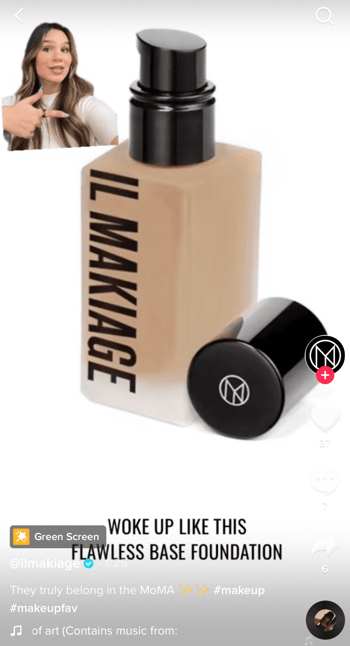
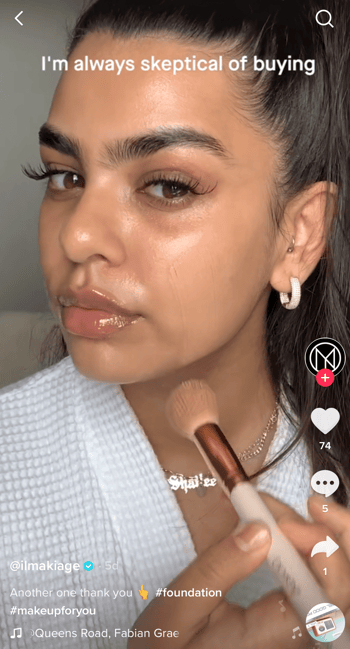
Who better than real people to promote “real” skincare based on all-natural ingredients?
Eminence’s influencer partnerships range from everyday fans to skincare professionals – all eager to show off Eminence’s organic and eco-friendly products. The brand makes a point to ask their audience questions to both pick their customers’ brains and drive engagement.
Reposting content from accounts with less than 1,000 followers, Eminence proves that stellar content from beauty influencers doesn’t require working with celebrities.
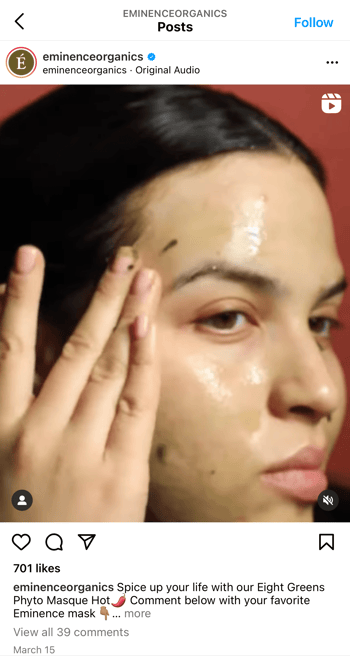

Sol de Janeiro loves to highlight their products “in the wild” with colorful settings. Likewise, they’re happy to put their influencer partners at the forefront of their promotions. Influencer and podcast host Danielle Carolan has promoted the brand on her Instagram Stories while being featured on ther company’s feed as well.

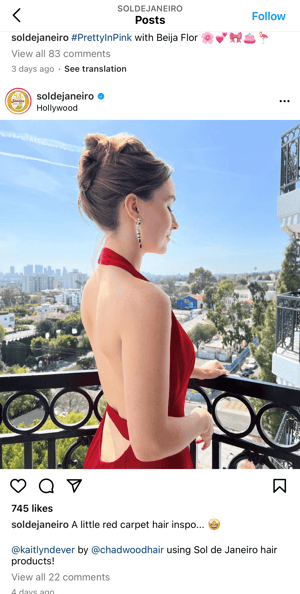
Protip: don’t neglect partnerships with influencers that already know and love your products!
Remember that organic partnerships with current customers make the process of working with influencers so much more seamless.
Loops Beauty’s creative, colorful and in-your-face (literally!) branding is reminiscent of many of today’s biggest DTC brands.
But more notable is the fact that Loops goes out of their way to partner with creators that reflect both their audience and their values. For example, the brand recently partnered with multiple artists that identify as female as part of International Women’s Day.
This inclusivity not only speaks to the brand’s audience but also how the company’s products are genuinely made for all skin types.
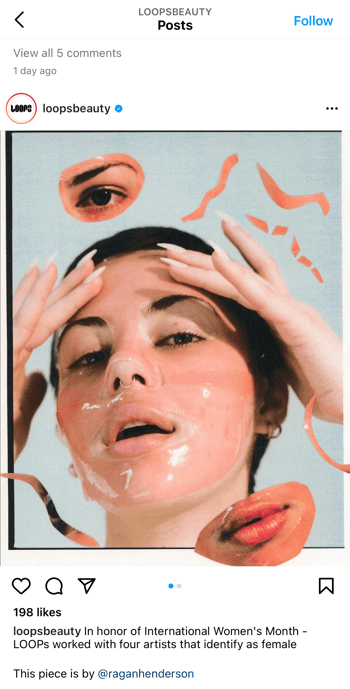
Klorane is another beauty brand that partners with influencers from all walks of life. From models and makeup artists to everyday creators, the brand strives to showcase people who love their products regardless of skill level.
Oh, and we’re loving the luxurious locks!
As an added bonus, much of Klorane’s influencer content centers around problem-solving – this includes thinning hair, fighting frizz and getting rid of grease. One of the biggest benefits of beauty influencer marketing is the ability to show real-world results and applications of your products to people who’ve never seen you before.
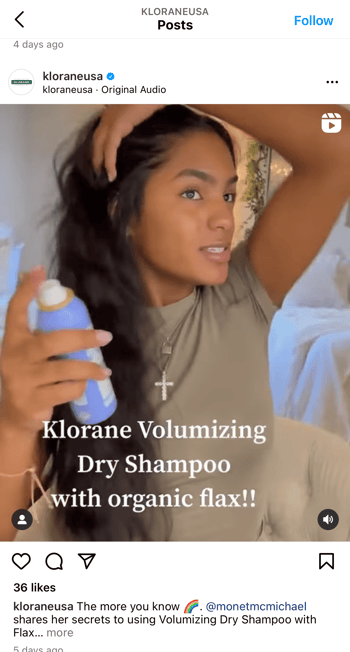
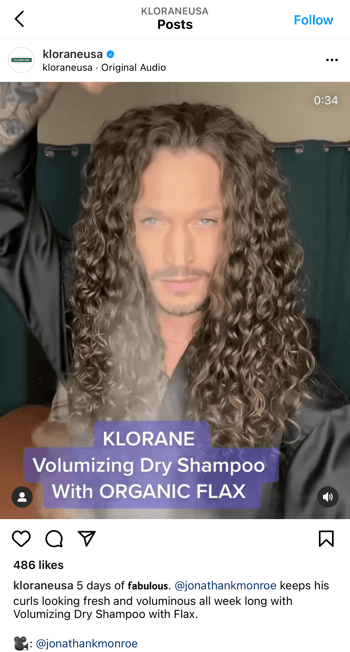
Maybe we’re biased but we love beauty brands that gift influencers with products in exchange for an honest review.
Kosas does a fantastic job letting their products speak for themselves with the help of their influencer partners. The brand goes to great lengths to find the right Instagram influencers to send products to. Facemasks, hair serums, dry shampoos, foundations – you name it!
Unsurprisingly, their customer feedback is always fabulous. Gifting not only earns Kosas tons of awesome UGC but also positive feedback to repost via social. It’s a win-win.
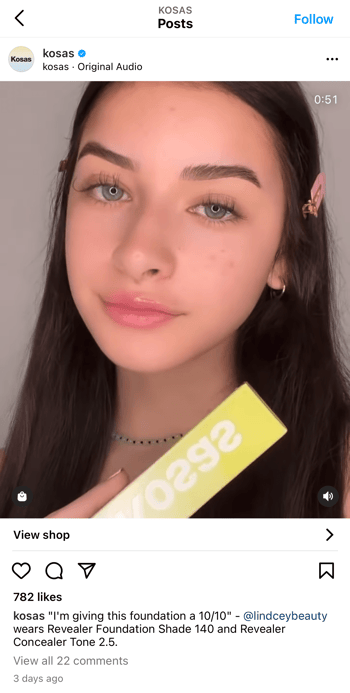
Focused on self-care, Skin Gym strives to bring the spa experience home to their customers.
The brand’s influencers regularly stream live social media tutorials to show off everything from rollers to LED masks and facial ice globes.
Since some of Skin Gym’s offerings may be unfamiliar even to seasoned beauty enthusiasts, so customer content is crucial. Rather than leave potential customers scratching their heads or wondering what a product is all about, they can see it in action with actual results.
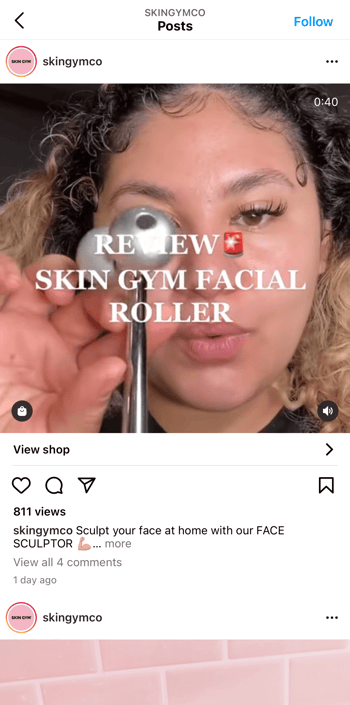
Translation? Influencers are awesome for reaching consumers whether they’re just browsing or ready to buy. With their affiliate program, Skin Gym highlights how Skincare brands looking for influencers can expand their reach further and spread the word.
As influencer marketing for beauty brands continues to boom, building a network of creators is a must-do for brands that want to stay competitive and stand out from the crowd.
That's because a larger influencer presence benefits beauty brands across the board.
Authentic content you can whitelist as ads. More visibility in social search. Real-life social proof.
Again, beauty brands are the best candidates to adopt an always-on influencer strategy that sources content from creators long-term. If your brand is ready to ramp up your own campaigns and earn authentic content from hundreds of influencers, Statusphere can help.
Our micro-influencer marketing platform matches brands with vetted creators from our network using 250+ first-party data points.
From skin types to preferred cosmetic products, beauty brands benefit from our software by getting super granular with their influencer targeting.
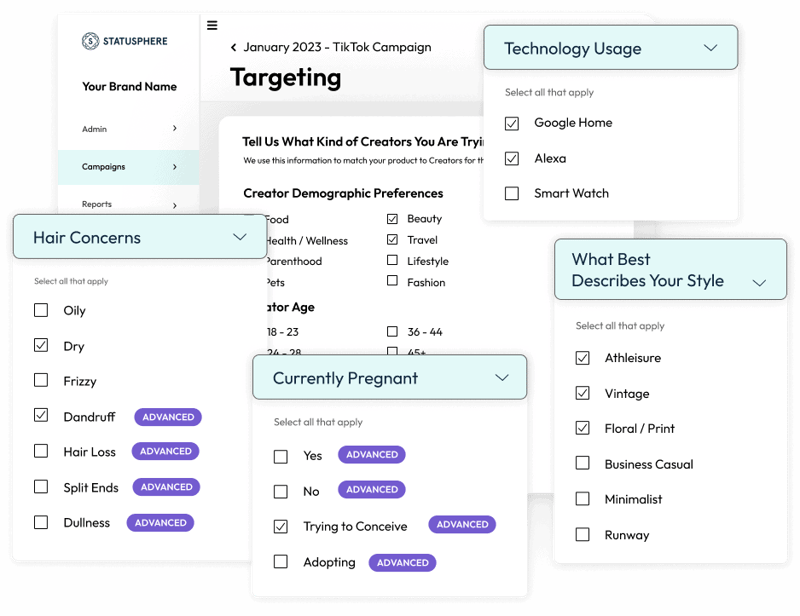
By working with specific influencers relevant to your beauty niche, you're more likely to earn authentic, repurposable content versus sourcing creator content yourself. We've already generated over 75,000+ pieces of content on behalf of 400+ consumer brands.
Want to learn more about how our software works? Get in touch with one of our experts to see how we can maximize your brand's influencer marketing ROI with guaranteed content at scale.
This article was first published in September 2019. It was last updated Mat 20, 2023.
The numbers don’t lie when it comes to how well influencer marketing works in 2024. Below we share 17 eye-opening influencer effectiveness statistics...
How do brands calculate the ROI of influencer marketing? This post breaks down ways to measure influencer marketing ROI and formulas to help.
Adopting an always-on influencer marketing strategy is key to better campaign ROI. This post explains why influencer campaigns shouldn’t be one-hit...
Be the first to know about the latest tools, trends and strategies in influencer marketing for brands.